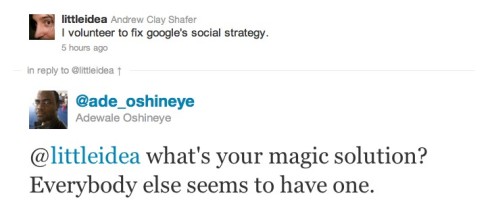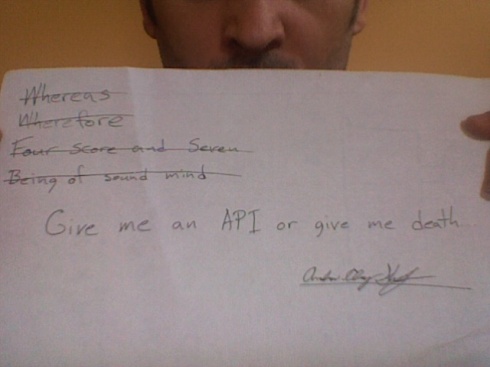Update: Following up to all the conversations, I’ve had about incubators and Silicon Valley since last week, I didn’t mean to imply ‘a list’ or that there are not other incubators besides YC, TechStars and 500 Startups that create value. Though, like most things, I think the tendency is a Pareto Distribution. I would also like to point out that there is nothing wrong with programs that are not explicitly designed to help companies get investment, just don’t mention investment as a central feature in marketing the program.
The way for anyone to establish that value is to provide transparent expectations and data about their program. Done.
There has been an explosion of incubators in the last few years. Most of them suck. Some suck so bad that the net value created by the program is probably negative. I’m not going to name names. This is just about results.
Let’s start with a story. There are minor variations, but I’ve seen it played out in real time more than once in the last few years. The story goes like this. An incubator has a class of companies, they give them a little cash, they have a weekly session with a mentor or whatever, time goes by, demo day, no one gets funding, fail, fail, FAIL.
what’s wrong
They tried to copy the Y Combinator model, and by ‘copy’ I mean cargo cult. They performed the outwardly obvious ceremony, but didn’t understand and thus couldn’t replicate the mechanics of cause and effect.
Y Combinator has had impact on the dynamics of startup formation and funding not because of the exact details of a program. But the details are what cargo culters can see: three months, a dollar figure, weekly sessions, gogogo, demo day… the end , most of the companies dissipate.
To be successful an incubator has to do two things. First, create companies that are actually fundable, second, get them an audience with investors interested and able to fund. That’s it. That’s all. Connect the dots. Success.
create companies that are actually fundable
To accomplish the first, you can look at details like Paul Graham’s judgement of people and ideas, or Brad Feld’s numbers and analysis, or Dave McClure’s hustle and passion. You can look at the program, and the mentors. You can talk about lean startup pivots or vision or whatever. At the end of the day, there is a fairly narrow band in the total spectrum of business opportunities that are venture fundable (though that band still represents infinite opportunities). If through whatever process of filtering, coaching and pivoting, the resulting companies don’t represent an opportunity for plausible venture returns, then by definition those companies will not get funded.
The fundability is also a function of how the opportunity is represented. Raising a round of funding is telling the story of your company to a particular audience. If you can’t connect the right dots for the investors, they probably can’t connect them for you. I literally grimace when I meet founders who have come through these programs and don’t understand how to discuss the addressable market, the go-to market, let alone term sheets. The point is that a company is only as fundable as they are able to tell the story that they are fundable. And that skill is something that many incubators fail to teach. Which is a segue to what has to be in place to accomplish the second: get them an audience with investors interested and able to fund.
the network: the only thing that’s real
The traditional venture model ran on warm introductions. If you have an incubator that can’t make that hand off personally, or get the right audience in the room for demo day, then the value of the program is severely limited. So much, that I’d argue for what you trade in equity for the amount of money, the founders’ time would be better spent reading through Venture Hacks or ‘The Business of Venture Capital‘, and then hustling to social engineer introductions themselves.
As much as anything that’s what the successful incubators are leveraging. YC leverages the personal connections and reputation of Paul Graham et al. Dave McClure is PayPal Mafia. He knows people and more importantly, people know Dave. These programs, through the network of people involved, can make introductions to dozens of individuals who in many cases MUST fund startups. That is a competitive advantage.
out of the ghetto: advice for founders
What can be done?
If you are a founder looking at a program that hasn’t had at least 50% of the previous companies funded, you might reconsider the options. You may have a good experience and learn some things, but there is an opportunity cost. If your life’s mission is really to make something amazing happen with your idea and you have the resources to devote your time to that, then what are you waiting for. If the time spent and the equity traded isn’t going to open more doors for you than just working on the code and angel list, then that program might be a setback, because you’ll just have to do those things anyway and you won’t have the burden of sorting good advice from the bad. You will also inevitably be judged by the quality of companies you stand next to, at least in the context of the program.
If you can go to YC, Techstars or 500 startups, you should. I would. You’ll learn things and get a tiny bit of money, but the connections you make to the network of founders and mentors is what will make all the difference. That’s the fat head of the incubator distribution. I’m sure there are others that add value in the middle, but I want to encourage people to be aware of what you are getting into and for what. In addition to the time and equity commitment, be sure to get more data and weigh the options and benefits.
- How many companies have been through the program and how many got funded?
- Who are the mentors in the program and what are their backgrounds?
- Can you get in contact with people who have been through the program? Especially founders that failed.
- What are the other options? (for example, building something)
unsolicited advice for the well intentioned incubator
If you run an incubator and your earnest concern is the creation of value, this is my unsolicited advice. (Remember, there’s just two things you need to do, create fundable companies, get them in front of investors.)
- If your companies aren’t getting funded, take it personally. Look at what your program creates and the relationships that are being built with investors.
- If no one involved has ever been funded, that’s a problem. If nearly everyone involved hasn’t been funded or is in a position to fund, that’s a problem. Fix it. You have very little hope to create fundable companies otherwise.
- The companies should be getting as many questions from you as they are answers, probably more… a lot more. Of course, that’s predicated on knowing the right questions to ask.
- The incubator needs to be building relationships with investors as much or more than any of the companies. If no one running an incubator has or can build those relationships, how can they can help a company build relationships?
There will always be advantages in resources and relationships. That’s how the world works. Understanding that is the first step to gaining those advantages. Hope that helps.
tl;dr if an incubator is run by people who have never run a start up, never successfully pitched venture or haven’t got the cash on hand plus the risk tolerance to make considerable investments, the companies that accomplish anything will be in spite of the program rather than because of it. Some of these incubators appear to be nothing but a hobby for individuals of relatively high net worth, often having had nothing to do with venture investment in the past, to tell their war stories filtered through survivor bias to founders who have to build companies in an environment different from anything their mentors have ever experienced. The resulting bad advice and misguided effort may be a net negative for all involved, the founders and investors.
addendum: After writing this I found this, which could potentially be a useful for collecting and comparing data. There is a link there to a post and literal dissertation on forming seed accelerator programs and a follow up to that. Jed Christiansen provides a thoughtful treatment of the subject with sound advice, but the primary focus is how to make an incubator appealing to the entrepreneur, while follow on funding is mentioned in passing as a complication. Venture funding is a pull system, there has to be explicit signals to pull and someone to do it. (if you don’t know what a pull system is, see me after class)




